
Ground ginger is remarkable and distinctive. It imparts a warm spicy and peppery flavor to gingerbread and ginger cookies, one that’s often the star of the show. It’s equally at home in a variety of interesting savory dishes, including those that rely on Asian flavors. You can even use it with chicken, ground beef, or countless other ingredients.
Much of ginger’s magic comes from the compound gingerol. This is responsible for the spice’s distinct pungent flavor. The gingerol is also why no other spice offers exactly the same flavor notes.
Gingerol does much more than just make ginger taste the way it does. The compound also has antioxidant and anti-inflammatory properties, which offer a wide range of benefits for health. Ginger has been linked to better digestion as well. That’s why it reduces nausea for many people.
The fact that nothing tastes quite like ginger creates some problems when it comes to cooking. What happens when you need ginger and don’t have any on hand? What can you use instead?
The best substitutes for ginger include other types of spices, like allspice, cinnamon, or nutmeg, as these all have similar warming properties. You can also turn to fresh ginger or galangal (a close relation of ginger). These are your closest substitutes. However, many people won’t have them on hand, so they’re not as helpful.
Substitutes For Ginger
Fresh Ginger

If you specifically want the recognizable pungent flavor of ginger, then fresh ginger is the best way to go. To use it, you’ll first need to grate the ginger.
Now, if the ginger is young with a thin skin, you can simply grate it as-is. If the ginger is older and has tougher skin, you might need to peel it first.
Once grated, you can use roughly a teaspoon of grated fresh ginger for every 1/4 teaspoon of ground ginger in your recipe. In other words, you should be using roughly four times as much fresh ginger as ground ginger.
This ratio works because ground ginger has a more concentrated and intense flavor than fresh ginger. That said, fresh ginger offers some extra complexity and different flavor notes, so your dish won’t taste quite the same as it did with dried ginger.
If you have time and patience, you could dry fresh ginger yourself, which would give you the closest possible substitute for ginger powder. The process takes at least a few hours, so it won’t help if you need ground ginger immediately. Still… it’s worth considering if you have extra ginger root.
Crystallized Ginger

Crystallized ginger (or candied ginger) is the other ginger product that’s worth considering. It’s a little trickier, as the ginger flavor is much less intense and you’re getting extra sweetness from the sugar. The ginger is also chewy, so it adds more texture to your recipe than ground ginger will.
Even with these issues, crystallized ginger can work as a substitute, especially in sweet recipes. To use it, you’ll need to first chop the crystallized ginger up into very small pieces.
Then it’s a matter of experimenting. Because the ginger flavor is mild, you’ll typically need more crystallized ginger than powdered ginger (or fresh ginger). This could mean you’re using 1/4 cup of crystallized ginger per tablespoon of ground ginger in your recipe. You might need even more than that.
Experimenting matters because this amount of candied ginger will noticeably impact the sweetness and texture of your recipe. You might find that you need less ginger, even if this creates a more muted ginger taste in your dish.
Consider the sugar content in your recipe too. You’ll often need to decrease the sweetness elsewhere in your recipe to account for the extra sugar from the crystallized ginger.
Ground Allspice

If you don’t have any ginger products on hand, you’ll need to try a different spice. Ground allspice is a common choice, as it has some of the same warming notes as ginger.
There is also a slight underlying pepperiness that should work well in most dishes that call for ginger. That said, you certainly don’t get the heat and pungency normally found with ginger. Allspice is also a little sweeter, which is fine in sweet recipes, but much less appealing in savory ones.
Allspice is powerful for the complexity of flavors it provides. Despite being a single spice, it has notes of nutmeg, cloves, cinnamon, and black pepper. These flavors are especially good in baked goods, like muffins, pies, and cookies.
Ground Cinnamon

Cinnamon is another spice to consider. It has a warm, sweet, and somewhat woody flavor, without much spiciness or heat (features that make it perfect for baked goods).
The flavor notes are quite different than ginger, yet cinnamon still works because it complements many of the same ingredients. So, many types of baking will taste fantastic with cinnamon instead of ginger – they just won’t taste the same as when you used ginger in the recipe.
Ground cinnamon has some useful advantages too. First, it’s easy to use. As with most dried spices, you can simply use ground cinnamon as a 1:1 replacement for ground ginger.
Cinnamon is also a commonplace spice, one that most of us already have in our cupboards. This makes it one of the most convenient ginger substitutes and perfect if need ginger urgently while making a recipe.
Ground Nutmeg

Nutmeg is another warming option, with some nutty and spicy notes. It doesn’t offer the same zing you get with ginger, but that’s true for all the spice substitutes.
Regardless, nutmeg works well in most sweet recipes that call for ginger, including baking. You can use small amounts of nutmeg in savory recipes as well, as other ingredients should mask most of the extra sweetness.
Cardamom

Cardamom is another famous complex and warming spice. While the flavor is fairly delicate, there are enough peppery notes to make it interesting.
The flavor profile works well in many recipes, including cakes, hot drinks, and even curries. It’s one of the few ginger substitutes that you can use in either sweet or savory meals without much of an issue.
A Combo Of Spices

The spices above can all be used individually or you can mix them. Combining multiple spices creates a more complex flavor profile, while stopping any of the spices from dominating the meal.
For example, you could use equal measures of ground allspice, cinnamon, and nutmeg. Adding a dash of black pepper may help too, as this offers some heat.
Mace

While mace isn’t well-known, it’s a fascinating and delicious spice. It is sometimes called the sister spice to nutmeg, which makes sense, as both spices come from the same tree.
Notably, nutmeg is the seed of the nutmeg tree, while mace is made from the lace-like coating that surrounds the nutmeg seed. These two spices are similar in some ways and completely different in others.
Mace is the more complex option, with flavor undertones that include pine, citrus, and black pepper. It’s also less sweet than nutmeg, which is ideal when looking for a ginger substitute. You might choose to use mace in a savory dish and nutmeg in a sweet one instead.
Galangal

Galangal is one of the best replacements for ginger, as the flavor profiles are so similar. There are still differences though, as galangal is less spicy and offers some interesting citrus notes. Still, the differences are minor enough that the two roots can be used in the same recipe.
The similarities aren’t surprising, given that ginger and galangal are closely related.
You can even use the same measurements. So, galangal powder can be used as a 1:1 substitute for ground ginger. For fresh galangal root, you’ll want a teaspoon of grated galangal for each 1/4 teaspoon of ground ginger in your recipe. That’s the same ratio as when you use fresh ginger instead of ground ginger.
The challenge is that galangal isn’t that common. If you don’t have any ginger at home, you probably don’t have galangal either.
Pumpkin Pie Spice

Fans of pumpkin spice lattes (and other pumpkin spice treats) probably already have a jar of pumpkin pie spice in their cupboard at home. This makes an excellent alternative to ground ginger, as it has complex flavors and even contains a little ginger.
Pumpkin pie spice ends up being aromatic, warming, and somewhat sweet (especially as cinnamon is the dominant spice). Because of this, the spice mix is best used in sweet recipes.
Turmeric

Turmeric is a different type of substitute, as it has earthy and peppery notes, rather than being sweet. It’s even occasionally described as tasting like bitter ginger, making it ideal as a substitution.
The bitterness and intensity of turmeric make it best in savory recipes. This includes curries, stews, and soups. While there are still notable flavor differences, turmeric works well enough in many recipes.
The main thing to watch out for is the vibrant yellow-orange color of turmeric, as this can completely change the color of some dishes. Such a color change might be appealing or frustrating depending on the meal you hope to make.
It’s also best to use turmeric sparingly, as it has a strong flavor. Start with just a small amount. You can always add more if you need to.
Horseradish

Like turmeric, horseradish is best reserved for savory dishes. It’s an intense substitute that offers a pungent and sharp flavor that’s quite distinct from ginger.
This substitution is very situation-specific. It’s best reserved for savory recipes where you need a noticeable kick of flavor. Even here, try starting with a tiny amount of horseradish. This may be more than enough to provide the desired kick.
Green Onions

For savory dishes, sliced green onions are an interesting alternative to ginger. While they don’t offer the same spicy notes as ginger, they do offer an interesting pungency that works well in many of the same meals.
Try using green onions instead of ginger in stir-fries, soups, and any noodle-based dish. A 1:1 substitution of chopped green onion to ground ginger is a good place to begin, but you may need to tweak the ratios based on your recipe and flavor preferences.
Nothing

The items on this list all work instead of ginger, but none of them replicate the flavor exactly. What about taking a different approach and leaving the ginger out entirely?
Doing so works best for complex dishes, where ginger is one flavor of many. In such cases, removing ginger decreases the complexity of the dish without having dramatic effects on the flavor profile. This approach is most relevant in complex Asian-style recipes, especially as many spices are too sweet to work in such recipes.
Alternatively, it might simply be time to swap recipes. Try finding one that doesn’t rely on ginger at all. This way you already have the required flavors without needing to make any substitutions.
Which Ginger Substitutes Are Right For You?
The Best Ginger Substitutes For Baking
Sweet spices like allspice, cinnamon, and nutmeg are the most popular when baking. You can also create a blend of these or use pumpkin pie spice, which is already a blend and even contains some ginger.
The Best Ginger Substitutes For Savory Asian Dishes
Galangal is the best substitute for savory dishes, as the flavor profile is close to that of ginger. However, it’s hard to find, so you might need to use turmeric instead.
The Most Convenient Ginger Substitutes
For sweet recipes, ground cinnamon is arguably the most convenient substitute, while turmeric is the winner for savory recipes. Both are very common pantry ingredients that many people will already have at home.
When Shouldn’t You Use A Ginger Substitute?
Ginger substitutes are best in recipes that include a variety of flavors. This makes them a poor choice for any dish that depends on the flavor of ginger.
For example, gingerbread will taste completely different if you use any substitute except fresh ginger. The same is true for ginger muffins, ginger pudding, and any other ginger-heavy dessert. Some ginger-based drinks won’t work well without the spice either.
You also can’t substitute if you’re looking for specific properties of ginger, like how it may help with nausea. While other spices have their own benefits, they contain a different balance of plant-based compounds, which changes the health implications.


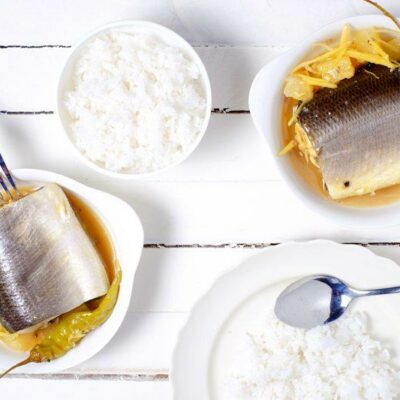




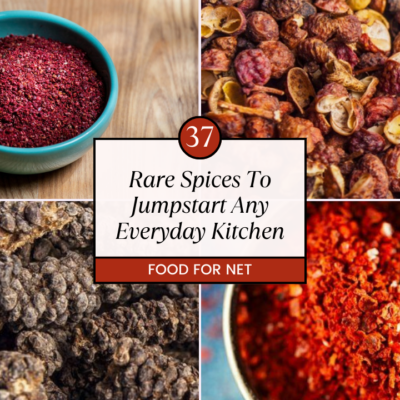
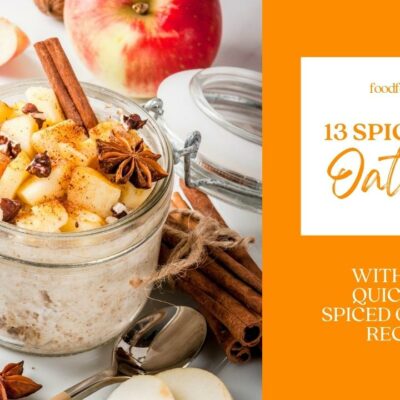


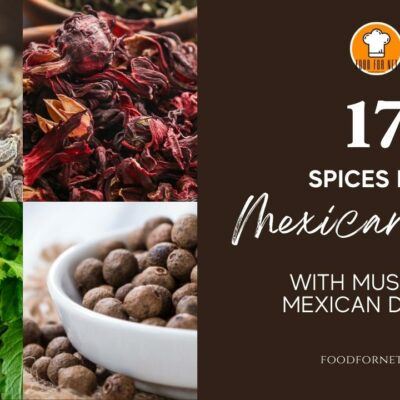

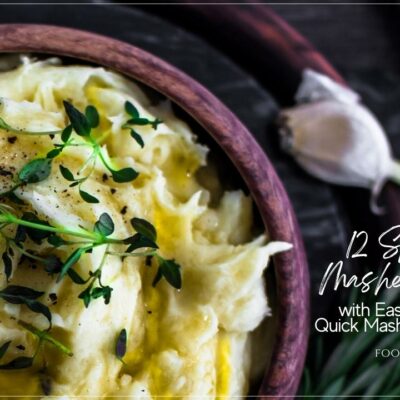



 22 Types Of Fries For A Hot And Crispy Treat
22 Types Of Fries For A Hot And Crispy Treat